The ability to control the sizing of bulk solids has become a critical aspect to the success of many processes and products, allowing for more efficient processing, more predictable results, and ultimately a better end product. Agglomeration offers the unique opportunity to fine-tune particle size in order to create ideal material characteristics for use as a feedstock or an end product.
Agglomeration is a process of particle size enlargement used to amass material fines into a larger, cohesive particle. Employed throughout a wide range of industries, agglomeration is capable of transforming dusty or difficult to handle materials into a more manageable form, even offering a number of benefits as a result.
Why Particle Size Control is Important
While it may seem like an insignificant factor worthy of minimal consideration, the particle size of a material can have a wide range of implications on a material’s performance, both as a raw material feedstock, and as an end product. Particle size can influence the following characteristics of a material:
- Flowability
- Dissolution/Solubility
- Packing Density
- Rate of Reaction
- Active Ingredient Deliverability and Timing
- Process Flow Efficiency
- Product Uniformity
The ability to control particle size has become increasingly important as products and materials become more specialized, expected to expertly perform as designed.
Benefits of Agglomeration
The applications in which agglomeration can be employed continue to grow due to the many benefits it can offer both raw materials and end products. These benefits are summarized below. See the infographic on the benefits of agglomeration >>
Product Benefits:
- Dust suppression/Dust-free handling
- Segregation prevention
- Improved appearance
- Improved characteristics and often, performance
Raw Material Benefits
- Simplified transportation
- Mitigation of dust loss
- Increased porosity, density, and melting abilities
Process Benefits
- Elimination of dust and fines
- Improved process flow effectiveness
- Increased process efficiency
Economic Benefits
- Conversion of a waste material to a marketable product
- Reduced transportation costs
- Decreased handling costs
Environmental Benefits:
- Reduced need to landfill
- Opportunity for waste to fuel applications
- Improved waste disposal cost efficiency
Types of Agglomeration
Various processes are covered under the umbrella of agglomeration. Among them:
- Pelletizing
- Balling (Note: the term “balling: is often used in the agglomeration space. It’s important to mention that this term is specific to the agglomeration of iron ore, and otherwise may refer to a size reduction process.)
- Micro-pelletizing
- Conditioning
- Instantizing
- Briquetting
- Compaction
- Tabletting
- Extrusion
- Nodulizing
- Granulating
- Prilling
Here, we’ll focus on the methods of agglomeration listed below.
Pelletizing
Category: Tumble Growth/Non-Pressure/Agitation Agglomeration
Process: Wet
Equipment Used: Disc Pelletizer/Pan Granulator, Agglomerator, with recommended Pin Mixer or Pug Mill
Not to be confused with the extrusion method often referred to as pelleting, pelletizing refers to the process of using a liquid in combination with a rolling action in order to encourage fines to collect and densify by coalescence, a phenomenon similar to rolling a snowball.
This method can produce round pellets/granules in the range of 40 mesh to ¾” (400μm to 20mm).
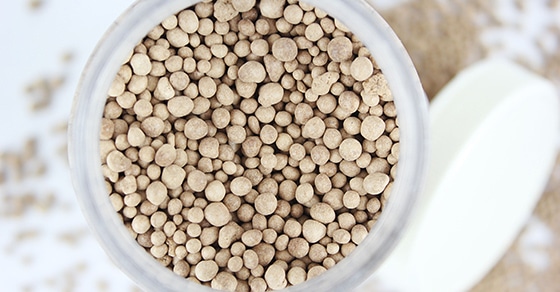
Image: Synthetic gypsum pellets that have been processed with a pin mixer-disc pelletizer combination setup.
Micro-Pelletizing
Category: Tumble Growth/Non-Pressure/Agitation Agglomeration
Process: Wet
Equipment Used: Pin Mixer, Pug Mill
Micro-pelletizing is a process similar to pelletizing, but with a focus on producing agglomerates in the range of 70 mesh to 35 mesh (200 to 500 μm). In some cases, the goal may not be focused on creating pellets within a specific particle size distribution, but to simply de-dust the material (in this sense, the process could also be considered conditioning) in order to make it easier to handle or apply.
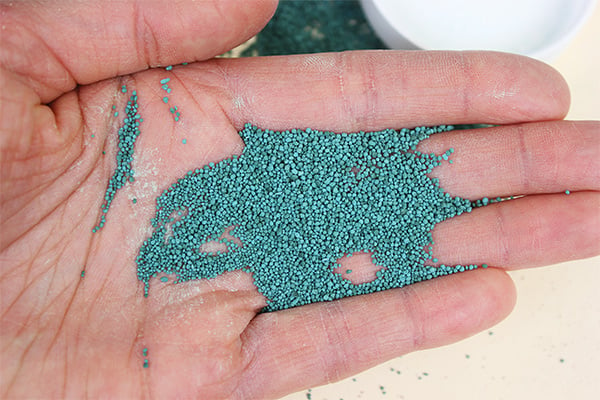
Image: Copper Hydroxide micro-pellets created in a pin mixer
Conditioning
Category: Tumble Growth/Non-Pressure/Agitation Agglomeration
Process: Wet
Equipment Used: Pin Mixer, Pug Mill, Rotary Drum
Conditioning is a process that isn’t necessarily carried out with the intent to produce pellets, but more so in order to prepare a material for use as a feedstock, or to make material handling and transportation easier. This often involves creating a homogeneous mixture of solid and liquid feeds. De-dusting is often a focus of conditioning operations.

Image: Ore fines that have been conditioned in a pugmill mixer
Granulation
Category: Tumble Growth/Non-Pressure/Agitation Agglomeration
Process: Wet
Equipment Used: Agglomerator/Granulator (Rotary Drum)
Granulation can be considered the same as pelletizing, but tends to refer specifically to applications in the fertilizer industry, though this is not always the case. Granulation may or may not involve the use of a chemical reaction, and is generally carried out in a granulator/agglomerator.
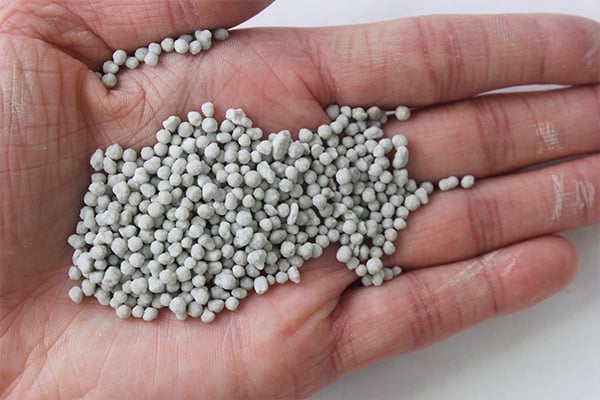
Image: Granular ammonium sulfate
How Agglomeration Occurs
The collection of fines into a unified particle may seem like a simple objective, but to produce a product that meets targeted specifications in combination with the desired size is a highly engineered task. Examining the phenomenon of agglomeration on a micro view can help to explain how this process works.
In non-pressure agglomeration, the amassing of particles into a cohesive unit relies on the following principles:
- Feedstock moisture should be considerably less than the end product in order to accommodate the addition of moisture in the form of a binder.
- Particles will collect against each other as a result of being tacky from the binder application.
- The continuous rotation of the agglomeration device promotes densification of the agglomerate, forcing water to the exterior of the particle. Surface tension and capillary forces help to hold the particles together. Water that has been pushed to the surface allows more fines to be picked up, causing the process to continue until the agglomerates have reached the desired size and are discharged from the machine.
- A range in particle size distribution allows for smaller particles to fill in the interstices between larger particles
Agglomeration Equipment
Despite the diversity of agglomeration techniques and the processes and materials to which agglomeration can be applied, much of the same equipment is used across processes, with each offering distinct advantages and disadvantages, depending on the material. When combined, the different pieces of equipment can produce further still various process and product outcomes. The main equipment used to carry out the techniques described above are overviewed here. For more information, see our infographic, Agglomeration Equipment.
All of the equipment listed here operates on a continuous basis with a constant feed of material and binder (where applicable).
Disc Pelletizers
AKA: Pan Granulators, Pan Pelletizers
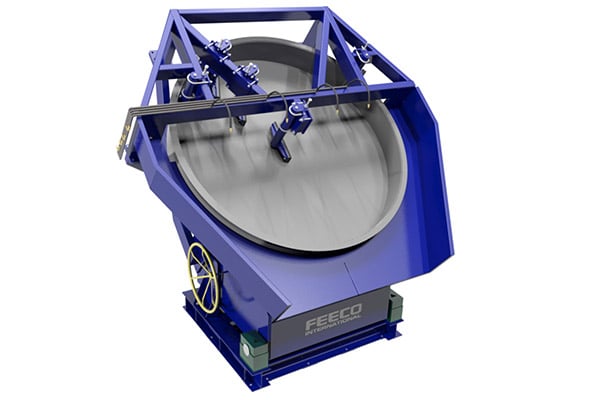
Image: 3D Model of a FEECO Disc Pelletizer
Disc pelletizers are known for the premium pellet product they can create. Disc pelletizers offer a number of variables that can be adjusted during production to fine-tune product characteristics, particularly size.
Disc pelletizers use a rotational movement in combination with a binder to produce a spherical granule with the desired characteristics. While their applications are innumerable, they are commonly used to process limestone, gypsum, fly ash, minerals and ores, EAF dust, fertilizers, and more. They are also frequently combined with a pin mixer to produce a premium pellet product.
Rotary Drums
AKA: Agglomeration drums, granulation drums, agglomerators, granulators
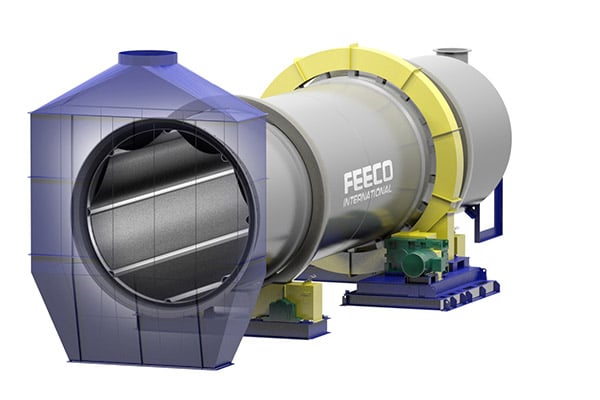
Image: 3D Model of a FEECO Rotary Drum
While rotary drums do not offer as much control over size during production as disc pelletizers do, they do offer a reliable, easily operated unit ideal for high capacity settings.
Rotary drums are also more tolerant than most equipment when it comes to variation in feedstock; they are less affected by fluctuations in feedstock, and can continue to produce a uniform result, though typically with considerably more recycle than what occurs with a disc.
Pin Mixers
Aka: Pin Agglomerator, Pin Mill
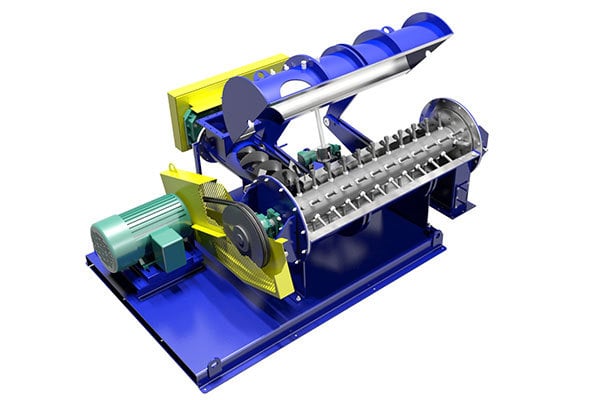
Image: 3D Model of a FEECO Pin Mixer
Pin mixers use an intense spinning action in combination with a liquid/binder in order to produce “seed pellets,” or micro-pellets. The spinning action allows the mixer to create a densified, de-dusted product.
Pin mixers can be used as a stand-alone agglomeration device, or may be combined with a disc pelletizer to produce a highly refined spherical granule. They are frequently used in the processing of minerals and ores, proppants, coal dust, pigments, poultry manure, and many more materials.
Pug Mills
AKA: Paddle Mixers
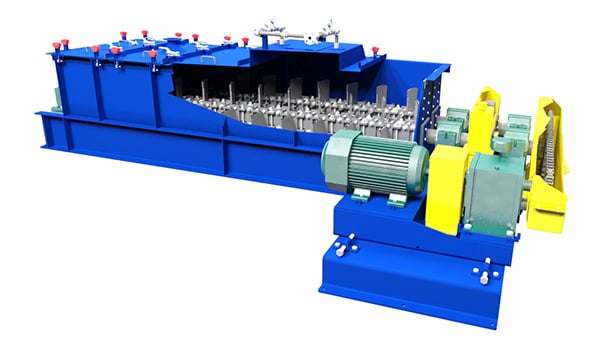
Image: 3D Model of a FEECO Pug Mill
Pug mills use a kneading and folding over motion in combination with a liquid/binder to condition and/or mix solid materials with a binder, either as a stand-alone device, or in preparation of a disc pelletizer or granulation drum.
While pin mixers favor finely divided solids, pugmill mixers are adept at processing more heavy-duty, demanding materials.
Considerations in Particle Size Enlargement
Enhanced Particle Size Control
When control over particle size is of the utmost importance, the best processing solution is the pin mixer – disc pelletizer combination.
In this setting, the pin mixer serves to pre-condition the material for processing on the disc pelletizer. Seed pellets formed in the pin mixer can then be “grown” on the disc pelletizer. The use of binder is often reduced in this scenario, as densification is achieved through the intense spinning action of the mixer.
This setup, combined with the many variables that can be adjusted on the disc pelletizer, allows for greater size control, reducing excessive recycle of under- and over-size pellets. This often results in increased production.
Feedstock
As is proven by the value of the pre-conditioning step, feedstock preparation is an important factor in the success of an agglomeration operation.
In all cases, the more uniform the feedstock, the better the end result will be. Fluctuations in feedstock characteristics such as particle size and moisture content will impact the agglomeration process significantly, even shutting down the process in extreme cases. A uniform feedstock ensures agglomerates can consistently form as intended, process efficiency is maximized, and an end product with optimal characteristics is reached.
Feedstock uniformity is less important when working with a granulation/agglomeration drum, as this type of equipment is more tolerant of fluctuations, but the rule still holds that the more uniform the feedstock, the better the end product.
Size Reduction
While this article focuses on the upgrading of material fines, the topic of size reduction should not be neglected.
Size reduction is often considered in an agglomeration process, as it plays a key role in preparing raw materials for agglomeration, as well as in crushing over-size product down for reintroduction into the agglomeration process.
Various devices are available for size reduction, with the hammer mill being the most common for crushing over-size agglomerates, and/or creating granules from compacted sheets.
Conclusion
Many industrial processes and end products alike rely heavily on the ability to control particle size in order to achieve and maintain process efficiency, as well as produce an end product with the desired specifications.
Agglomeration, along with the many benefits it can offer, has become a key tool in achieving the desired control over particle size, with many methods and equipment types available.
As a process that combines both science and art, expertise in material processing in agglomeration is essential to the success of controlling particle size and characteristics in any setting. FEECO is a global leader in agglomeration feasibility testing, process design, product development, custom equipment, and parts and service support. Our experience in agglomerating hundreds of materials is unmatched in the industry. To learn how agglomeration and particle size control can benefit your process or product, contact us today!


